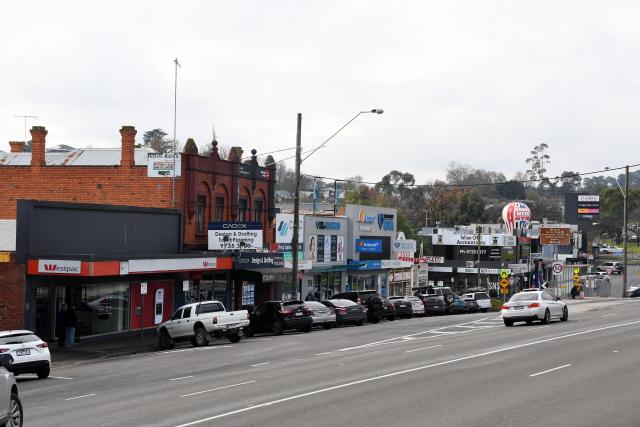
By Callum Ludwig
The push for the Yarra Ranges to be considered peri-regional to reflect the varied needs and lifestyles of the region continues.
Peri-regional is a term not yet recognised by the State or Federal Government, despite the recognition of peri-urban status, following the advocacy of the Peri-Urban Group of Councils (PUCV) and similar groups in states around the country.
Newly-appointed Chair of the PUCV and East Ward Councillor at Baw Baw Shire Michael Leaney said an invitation had been extended to Yarra Ranges Council to join the group.
“We need to get a definitive answer as to what peri-urban is so when you look at the Yarra Ranges as an example, Lilydale and Chirnside Park are not peri-urban, they’re basically suburban Melbourne,” he said.
“But when you go to Healesville or Warburton, they’ve got different needs and they’ve got to have different funding streams, you can’t apply what applies in Chirnside Park to what’s going to work in Warburton.”
Yarra Ranges Council confirmed that they were offered the opportunity to join the PUCV in 2023 but politely declined.
Yarra Ranges Council Mayor Sophie Todorov said councils under both terms share similar characteristics and can be eligible for similar funding opportunities.
“The PUCV Group is made up of Councils classified as regional under the Local Government Act – typically characterised as growth Councils or having areas of growth, such as regional cities,” she said.
“Peri-regional Councils are, meanwhile, on the urban fringe, classified as metropolitan but have regional characteristics that are intentionally and strategically being retained. For example, slower population growth, high conservation value areas like Green Wedge, agriculture and tourism industries,”
“However, peri-regional is not a recognised term by the State Government, and more used to describe the balance of our formal definition as a metropolitan Council, alongside our regional characteristics.”
Mornington Peninsula Shire has joined the Yarra Ranges in pushing for the recognition of peri-regional status, sharing similarly large contrast between townships, such as between the increasingly residential Mornington suburb and a town like Red Hill, where viticulture and agricultural ventures dominate the landscape.
Both councils are also part of the Interface Councils group of ten local councils in outer metropolitan Melbourne that form a ’ring’ around the more inner suburban or metro areas.
Mr Leaney said between these councils around the outer ring of Melbourne, quite often there are existing towns and communities that are seeing huge growth pour into them and are having to be retrofitted to accommodate it.
“It’s not like those areas where they just have bare paddocks and they build a whole entirely new community, these are existing locations that are developed and have very strong farming communities in these areas and people want to maintain their right to farm,” he said.
“It’s part of the reason why people find these communities highly desirable is because they want that mix of the lifestyle and the environment but we’ve got to be very careful that we don’t kill the golden goose,”
“We’ve got a very challenging line to go down to make sure that we maintain our character and we maintain the look and feel of our communities yet cope with the growth that is happening and will happen into the future.”
The PUCV consists of the Bass Coast Shire Council, Baw Baw Shire Council, Golden Plains Shire Council, Moorabool Shire Council and the Surf Coast Shire Council.
Mr Leaney said the PUCV have regular delegations to Canberra and Spring Street to advocate to the Federal and State governments.
“One of the things that we’re talking to the politicians in Canberra about next week is the development of what we’re calling a Per-Urban Future Fund, because both the Federal and State governments have come out with these big housing statements, which is great, but we need to have the enabling infrastructure on the ground to make it happen,” he said.
“We’ve been saying that there needs to be money put into the gaps that already exist, by the state and feds, because there’s no point in saying we need to build more houses if we don’t have any money to build the childcare centres or schools.”
The PUCV has prioritised Transport and Digital Connectivity, Planning and Land Activation, Local Liveability Infrastructure and Tourism Infrastructure, with digital connectivity, public transport and tourism infrastructure in particular concerns that are shared in the Yarra Ranges.
Mr Leaney said he thinks that branching away from basing funding access on shire boundaries would be of benefit.
“A shire boundary holds almost no relevance to the communities within it, they do that for administrative ease,” he said.
“Federal and State government need to take a look at making zones and allow the maps to be a little bit more fluid as opposed to the hard and fast line of a council boundary that in Victoria’s case, was written up in the mid-1990s,”
“I think as an organisation we’ve been able to make some really strong strides in the last few years, especially in Canberra. It often feels like three steps forward, two and a half steps back but this is a long road and to get key policy or directional changes takes time.”







